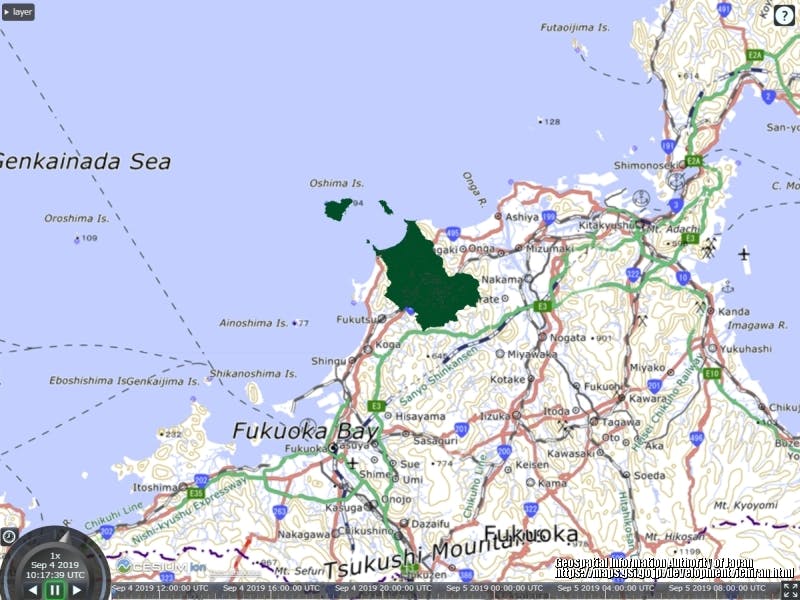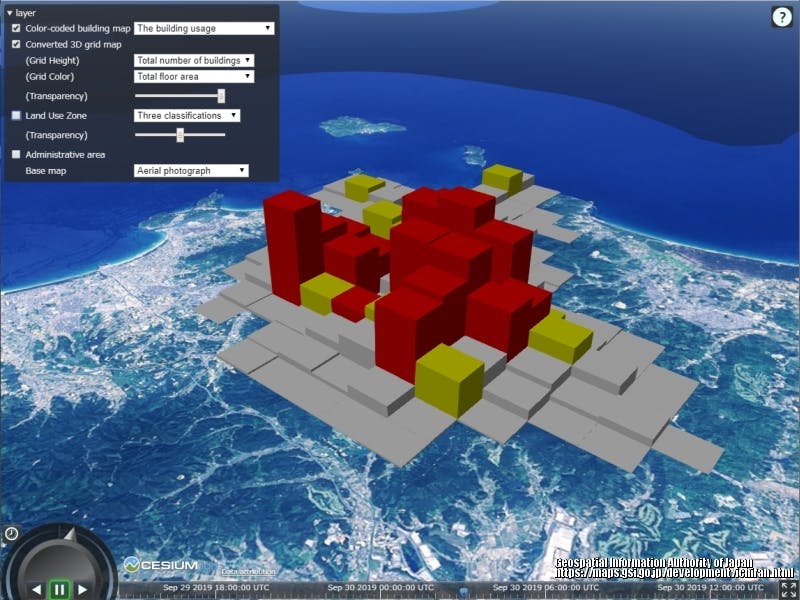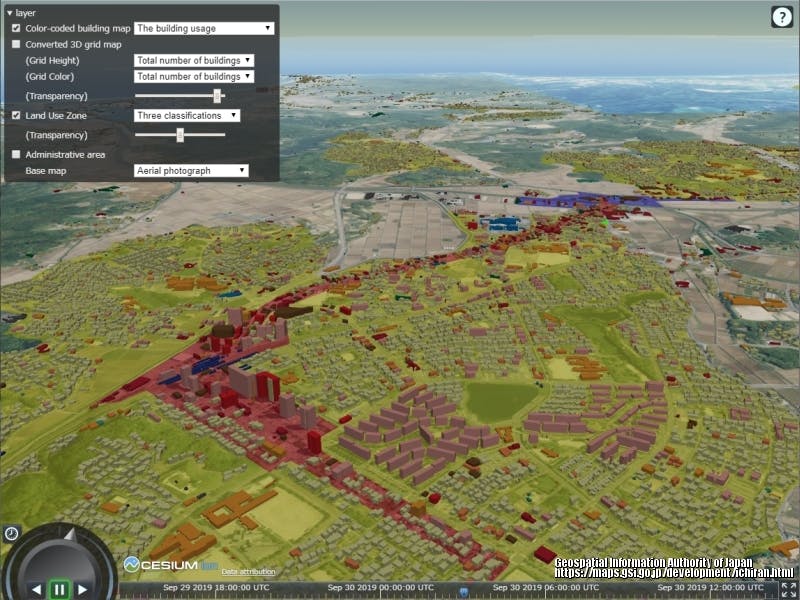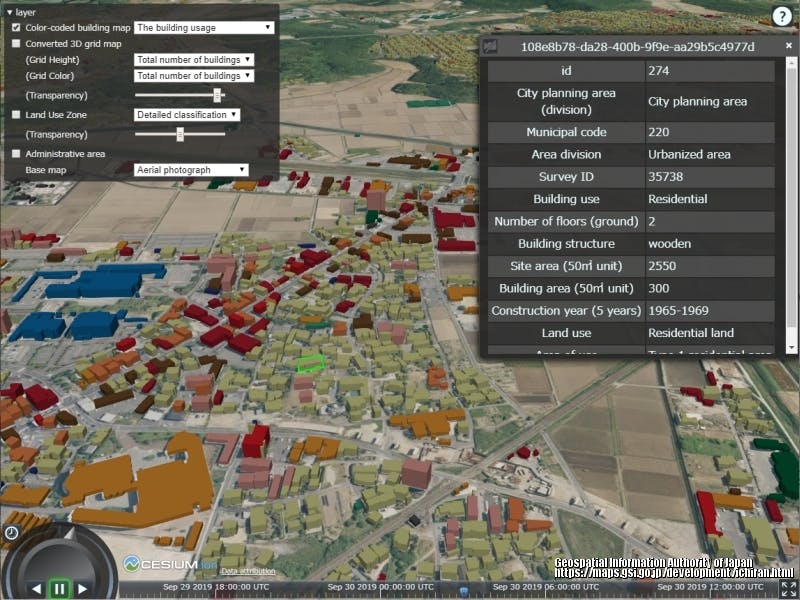i-Urban Renovation Visualizes Munakata City Building Status with 3D Tiles
The City of Munakata, Japan, is making it easier for citizens to access building data with their i-Urban Renovation application built on Cesium.

Munakata, Japan.
Local governments throughout Japan collect data about buildings, including their usage, the number of floors, construction materials, and the construction year. Munakata City, in the northern part of Fukuoka Prefecture, tasked their Urban Structure Visualization Promotion Organization with making this data accessible to the public in a way that was easy to understand.

The distribution of buildings in the area. The number of buildings is aggregated into a regional mesh (1 km grid), and the 3D grid graph is created using the value of the mesh code displayed in Cesium. Because the grid is linked to the information in the place and the number of buildings, it allows for an easy-to-understand presentation when explaining the local situation to residents.
The i-Urban Renovation app they built uses CesiumJS to visualize and share this data. Even though Munakata City covers approximately 120 square kilometers filled with numerous buildings, the application efficiently streams building data using 3D Tiles.

Styling buildings by usage, and comparing with land use zoning requirements. You can do something similar for your own data in Cesium Stories, which supports 3D Tiles styling.
With the Cesium app, users can see any building’s current status. Buildings can be colored across a variety of metrics, including based on:
- usage, such as residential, business, commercial, government, agriculture, and so on,
- number of floors, making it easy to see the distribution of high-rise and low-rise buildings,
- construction materials, such as wood, or reinforced concrete, and
- construction year, showing the distribution of the new and old buildings.
Also, users can check the relationship between the building usage and land use regulations by combining the building dataset with a land use zone dataset. When users click buildings, detailed building attributes will be displayed.

Viewing building usage. Click on individual buildings to see detailed data. We’ve recently added feature picking to Cesium Stories so you could build something like this yourself.
Check out i-Urban Renovation or the data encoding specification. Or bring your own data into Cesium ion to easily create 3D Tiles you can stream with Cesium.